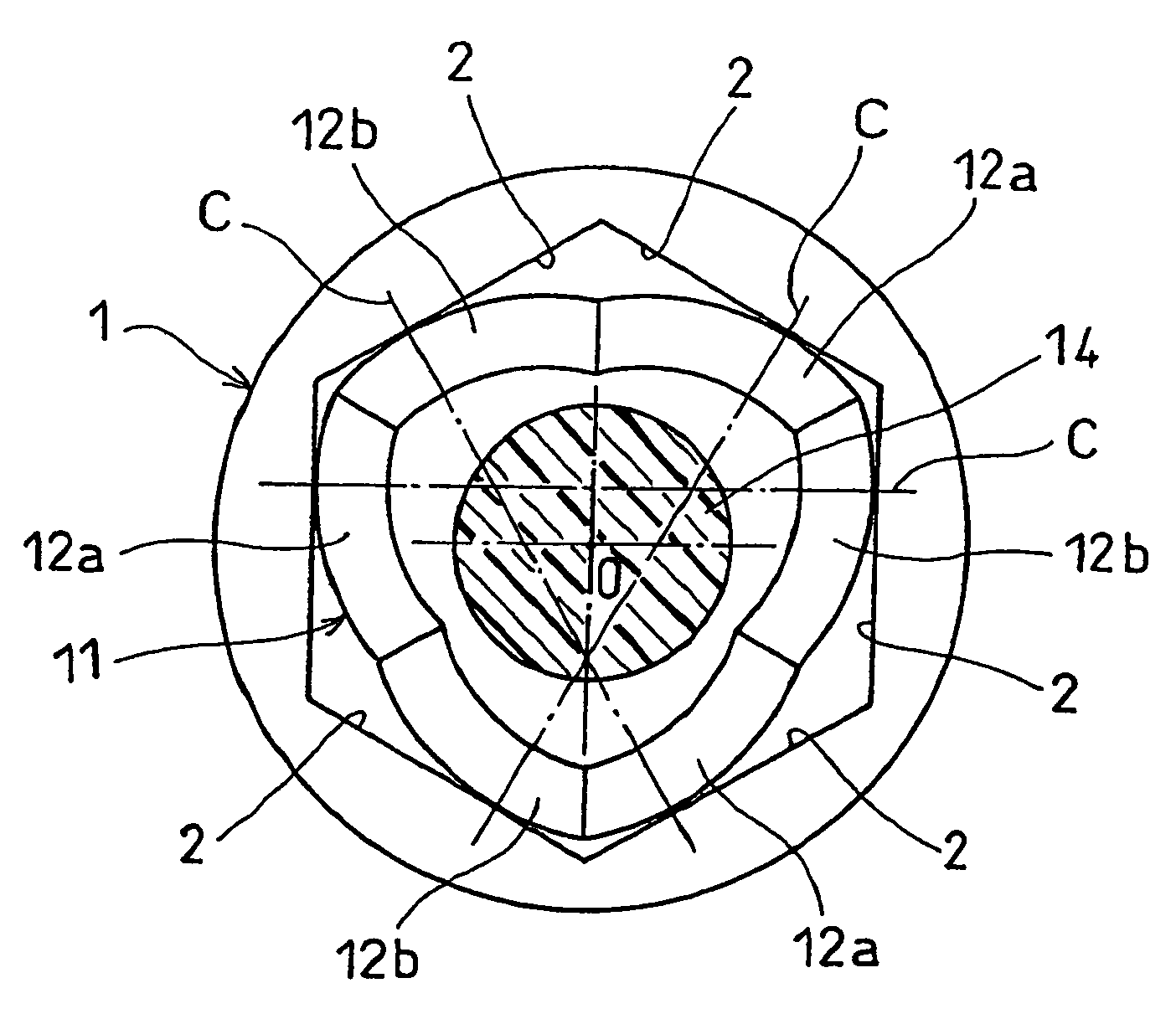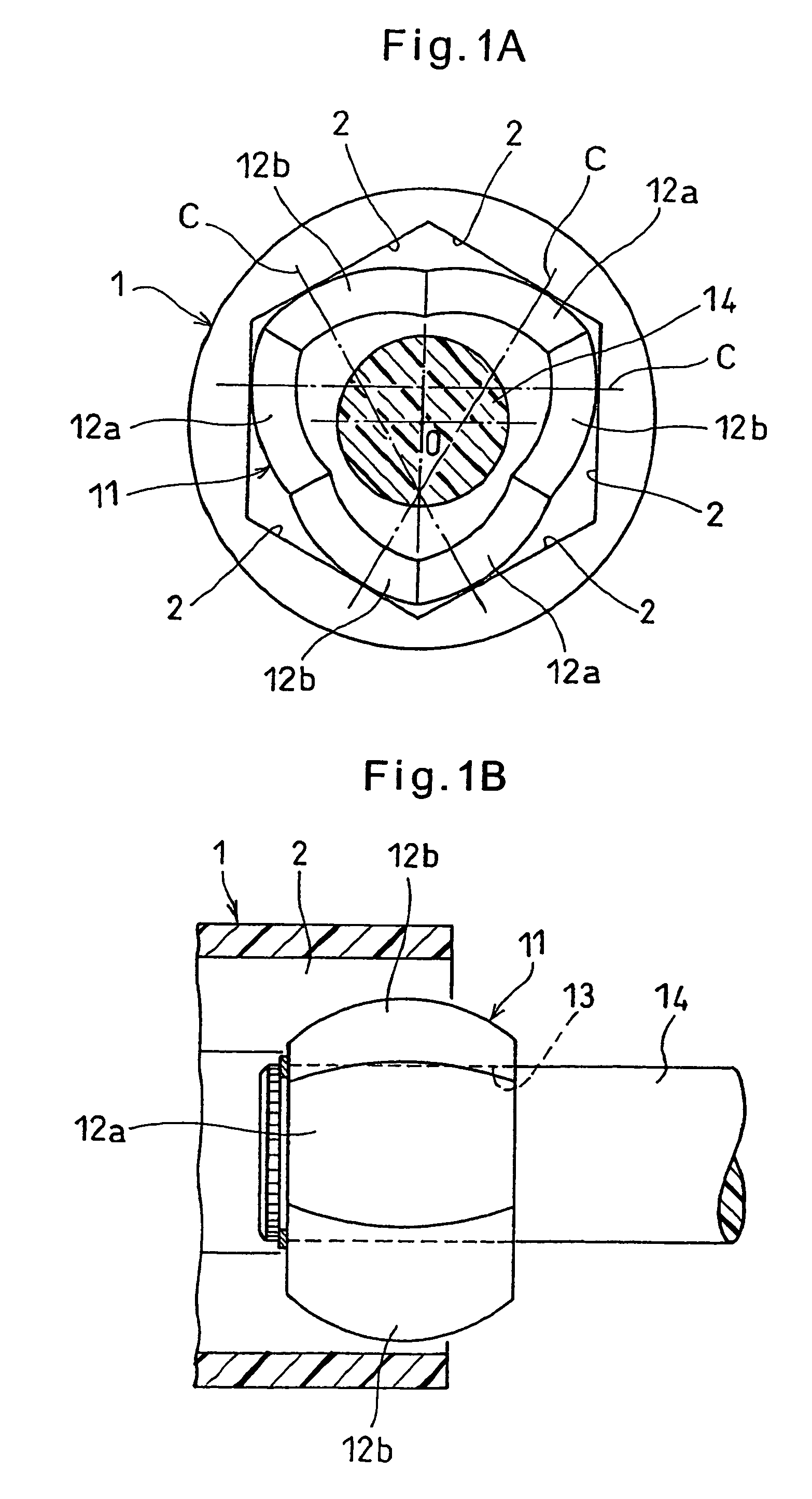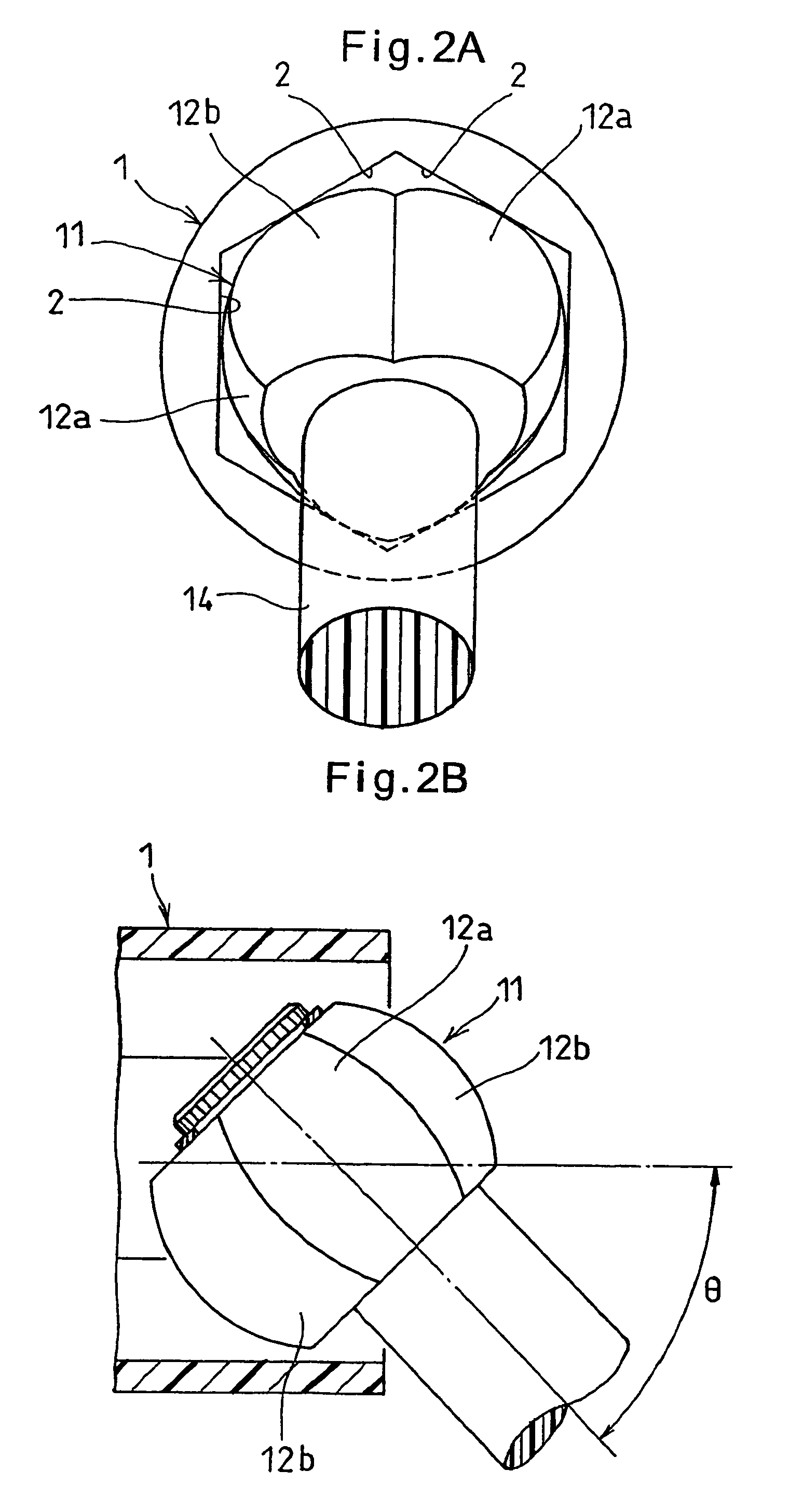Constant-velocity joint and image forming device
a constant speed, joint technology, applied in the direction of yielding couplings, electrographic process equipment, instruments, etc., can solve the problems of deteriorating image quality, difficult to precisely align the drum shaft and the rotary shaft of the motor, and the inability to rotate the photoconductor drum at a constant speed, etc., to prevent grease leakage, easy maintenance of the image forming device, and easy disassembly of the join
- Summary
- Abstract
- Description
- Claims
- Application Information
AI Technical Summary
Benefits of technology
Problems solved by technology
Method used
Image
Examples
Embodiment Construction
[0042]An embodiment of the present invention is now described. As shown in FIGS. 1A and 1B, the constant-velocity joint of the embodiment comprises an outer member 1 and a trunnion member 11. The outer ring 1 is formed with a regular hexagonal bore defined by six flat surfaces 2 that are parallel to the axis of the outer ring 1. The trunnion member 11 is inserted in this bore.
[0043]On its outer periphery, the trunnion member 11 has three circumferentially spaced apart first spherical surfaces 12a and three circumferentially spaced apart second spherical surfaces 12b circumferentially alternating with the first spherical surfaces 12a. The first and second spherical surfaces 12a and 12b are kept in contact with the respective flat surfaces 2.
[0044]The first spherical surfaces 12a each contact the corresponding flat surface 2 at a point offset in a circumferential direction (clockwise direction in FIG. 1A) from the circumferential center of the flat surface 2. The second spherical surf...
PUM
 Login to View More
Login to View More Abstract
Description
Claims
Application Information
 Login to View More
Login to View More - R&D
- Intellectual Property
- Life Sciences
- Materials
- Tech Scout
- Unparalleled Data Quality
- Higher Quality Content
- 60% Fewer Hallucinations
Browse by: Latest US Patents, China's latest patents, Technical Efficacy Thesaurus, Application Domain, Technology Topic, Popular Technical Reports.
© 2025 PatSnap. All rights reserved.Legal|Privacy policy|Modern Slavery Act Transparency Statement|Sitemap|About US| Contact US: help@patsnap.com



